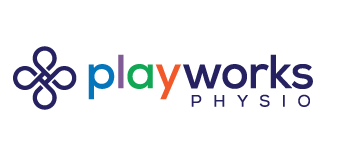My baby has a flat head…
Is this a common issue?
YES, this is a very common issue with babies. Flattening can be caused by the following:
- Your baby has a preference of looking in one direction, resulting from tight neck muscles
- Your baby prefers looking in a certain direction but there are no neck restrictions
- Your baby is a good sleeper and doesn’t move much when sleeping
3 Types of Flattening
Plagiocephaly is flattening on one side of the head from your baby preferring to look left or right. It is often associated with tight neck muscles (torticollis). Things you may notice:
- Flattening on the back when washing your baby’s hair
- One cheek appears larger
- One side of your baby’s forehead is more prominent than the other
- One eye is slightly larger than the other
Brachycephaly is flattening directly on the back of your baby’s head and is often seen with babies who sleep for long stretches without turning their head to either side. It causes baby’s head to be wider than average.
Scaphycephaly is the rarest type of head shape issues we see and is when the head is more narrow than average. It is most commonly seen in babies who spent long periods of time in the NICU because their heads are being turned from one side to the other.
How will a flat head impact my child?
- Depending on the severity of flattening, your child may have difficulty fitting helmets, because these are made for the average shaped head.
- Plagiocephaly can result in a forward shift of the facial bones, which can be purely aesthetic or in severe cases can lead to jaw issues.
What can we do?
- A paediatric physiotherapist can measure your baby’s head to determine if there are any concerns and provide you with education to best manage your baby’s head shape.
- When recommended, we can refer you and your baby to an orthoptist for helmeting. This is dependent on your baby’s age and the severity of flattening.
When is it best to seek help?
- The earlier the better! This provides more time to track your baby’s head growth and improvements in flattening. The earlier you come in the more likely we can address the flattening conservatively (with positioning, education and stretches if needed).
- If a helmet referral is required, seeking help earlier is better to optimize the amount of change obtained with the helmet.
If you have any questions about your baby’s head shape, feel free to contact us!
Written by: Maegan Mak
